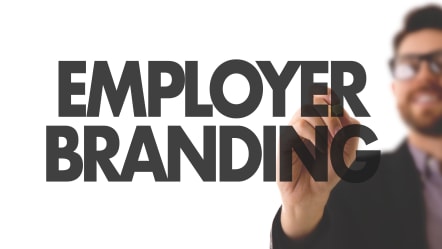How to Calculate the ROI of Tech Employer Branding

Employer Branding is very important, but how is its value calculated?
One of the most common questions we hear from customers is how to define the return on investment (ROI) for employer branding initiatives. After extensive research, we have come to the realization that there is no one-size-fits-all solution. However, this does not mean that calculating the ROI of your employer branding projects is out of the question.
By taking a more granular approach to employer branding, we are able to get a better understanding of the ROI and how it can be applied to common recruiting KPIs. In this series, we will discuss our approach and how your employer branding is adding value to the organization. Let's start from the beginning.
What is ROI?
ROI is short for return on investment. ROI is a calculation used to determine the profitability of an investment. In our case, that investment is the cost of an employer branding project, and the profit is the financial value realized by optimizing relevant recruiting metrics. There of course is a formula to calculate it:
ROI = [(Financial value – Project cost) / Project cost] x 100
Before we can continue, please review the following information and make sure you have everything you need.
Setting objectives:
If you have not already done so, it is important to determine your objectives before executing an employer branding initiative. Some common employer branding objectives include:
- Increasing the number of qualified candidates
- Reducing time-to-hire.
- Reducing cost-of-hire
- Improving quality-of-hire
- Boosting new-hire retention
The most important thing is to identify the metric or metrics that the organization is looking to improve and to develop a plan to track and measure progress over time.
Determining benchmark performance
It is essential that you next develop an understanding of your historical performance as it relates to your employer branding objectives. It is impossible to measure the efficacy of your employer branding efforts without a frame of reference, and benchmark numbers provide just that.
The ability to calculate historical performance will vary, but if you use an ATS in your recruiting efforts, start there. If you find yourself in the worst case scenario of having no data, it will be more difficult to calculate the ROI of your employer branding efforts, but not impossible. The most important thing you can do is to begin tracking immediately.
Account for costs
Now that you have set your objectives and gathered some benchmark numbers to compare against, it is time to calculate your costs. This is a relatively easy process, but it is important that you account for all of your employer branding efforts. Some of the most frequent costs include:
Employee time: Employer branding is often seen as a sunk cost, but it's important to remember that every minute your employees spend on this is a minute they're not spending on their core responsibilities. It is important to calculate the hourly rate of your employees working on employer branding to help determine your total investment.
Production: By developing your employer brand, you will likely incur some production expenses. For example, did you purchase a new URL for a dedicated culture blog? Make sure to include the expense of any new software your designers may need in your budget calculations.
Third-party expenses: From web development to content creation, there are many services that a third-party agency can offer which will help support your work. Make sure to include these figures in your ROI calculation.
No one likes homework, but it is necessary to effectively measure the ROI of employer branding efforts. A small amount of work now will lead to a big payoff later. Once you have finished, please come back next week to see how our equation can be applied to the first of many common recruiting metrics.













